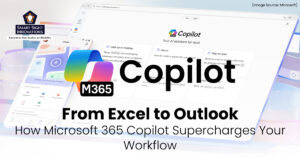 According to Statista, mobile app downloads will reach 258 billion in 2022. Android and iOS operating systems sound familiar, but the technology platforms in the app development process may need in-depth understanding. You may read about how some brands have their native apps or find a company that adopts hybrid mobile app development. What do those terms mean?
According to Statista, mobile app downloads will reach 258 billion in 2022. Android and iOS operating systems sound familiar, but the technology platforms in the app development process may need in-depth understanding. You may read about how some brands have their native apps or find a company that adopts hybrid mobile app development. What do those terms mean?
Categories of app development tools
Mobile app development tools can be broadly classified into web, native and hybrid app development tools. They differ in the technology used to code them, as in:
Web apps
Web apps are receptive versions of websites that can work on any mobile device or OS as they are delivered using a mobile browser.
Native mobile apps
Native apps are built for a specific platform or operating system be it Apple iOS, Google’s Android, or Windows Phone.
Hybrid mobile app
Hybrid apps blend web technologies and native APIs. They are developed using Ionic, C, HTML5, and others. Hybrid apps have more potential to streamline the development process.
Since you don’t need to build and maintain separate apps for different platforms, your business can save time and resources in building hybrid apps that deliver content across many platforms.
Popular hybrid app development frameworks
There are many hybrid app or cross-platform mobile app development frameworks to select from. Choosing the best one can be easy if you know what you’re looking for.
Flutter
According to Statista, Flutter, the most widely used cross-platform framework, had a market share of 38% in 2021. A Google UI framework, it helps you easily build and deploy aesthetically pleasing mobile apps.
It is a cross-platform app development framework that allows developers to use one codebase to build applications for both iOS and Android devices.
Advantages:
- Apps that easily adapt to different screens.
- A UI approach with easy-to-use widgets for interactive elements.
- Supports a fast reload resulting in faster code writing.
- Flutter works faster to increase the time-to-market speed.
- It features rich customizable widgets.
Examples:
- Alibaba, an e-commerce app for Android and iOS
- Hamilton, a music app for Android and iOS
React Native
According to Statista, React Native had a market share of 37% in 2021. It offers a more native look and feel and first-class support for functions like TouchID and push notifications. React Native is very appealing.
It’s a tool built by Facebook to design mobile apps with JavaScript, and is one of the most popular app development frameworks. It promises to grow and gain popularity.
Advantages:
- It can use code from different native platforms.
- Provides helpful tools to automate and accelerate development.
- High flexibility helps in creating smooth updates in no time.
- A hot reload feature that speeds up the development process thereby saving development cost and time.
- 95% of the code is cross-platform compatible.
Examples:
- Instagram, a social connectivity app
- Skype, a calling app
Ionic
Ionic’s outstanding ability is to create an elegant user interface. It is a hybrid solution for building mobile applications with excellent front-end user experience or UI interaction. Its powerful front-end software development kit (SDK) lets you build visually appealing hybrid apps using its full suite of tools.
Ionic allows you to enhance the functionality of an app by integrating it with JavaScript frameworks like Vue, React and Angular.
Advantages:
- It allows coding once and runs that code everywhere.
- Enables high-end integration of multiple configurable plugins.
- Easy and convenient app testing process.
- Ionic is an accessible mobile-first front-end framework for developing hybrid mobile apps with HTML5.
- The Ionic framework has top documentation support with a strong community.
Examples:
- Justwatch, a streaming engine
- McDonald’s Turkiye, a food delivery app
jQuery Mobile
Unlike many other frameworks, this platform does not try to adopt a native form. It defends its personality and, at the same time, functions flawlessly in various platform-specific environments. JQuery Mobile is a great option if you want to create something different instead of sticking to regular template designs.
Advantages:
- It supports all major mobile platforms and frameworks.
- Its library supports all important frameworks including Cordova or PhoneGap, Xamarin and Titanium.
- jQuery currently runs on 90% of devices, so you can be sure that your app will run smoothly on all platforms.
- jQuery offers excellent documentation, making it easy to develop your new hybrid app.
- Apps adapt to users’ devices and screen sizes and include add-ons for creating custom themes.
Examples:
- Visual Studio, for innovative apps for medium to small-sized firms.
- Eclipse, is an integrated development environment (IDE) as in Adobe.
Xamarin
This bundle has a good track record and a huge community of satisfied followers. Businesses in various industries have found it useful to simplify their daily operations. This framework allows you to build universal apps and run them on different devices without sacrificing native design.
Advantages:
- It helps you build apps that can run on iOS, Android, Windows, MacOSX and other operating systems.
- It allows you to reuse code, thus saving on time and costs.
- 70% of its codebase is suitable for cross-platform use, enabling developers to make changes to create customized products.
- Appealing platform-specific options to complement the general codebase.
- It allows you to extend existing C# code with native APIs to create cross-platform applications.
Examples:
- JustGiving, an online fundraising platform
- The World Bank, a survey conducting app
Mobile Angular UI
Angular is a JavaScript framework for creating interactive web applications. Angular apps allow users to quickly access their content with fast download speeds and efficient information processing.
It is a framework for hybrid mobile app development using HTML5 and CSS3 that runs on mobile devices with a browser or as a standalone native app using Apache Cordova.
Advantages:
- Its UI elements come with customizable features to deliver high-quality output.
- It allows you to create multi-channel applications compatible with desktop, tablet, and mobile phones.
- It has an AngularJS framework for building high-end single-page apps.
- It supports the development of reusable templates while reducing code duplication within your app.
- You don’t need multiple technology stacks as it takes care of front-to-back-end development.
Examples:
- PayPal, a payment app
- Gmail, an email app
PhoneGap
It is a widely used technology for hybrid app development. It is mobile-centric and open-source and provides robust and feature-rich applications. Its fully optimized hybrid applications work efficiently across multiple platforms and reach massive audiences in less time.
PhoneGap was previously named “Apache Cordova”, and was later renamed PhoneGap. It can be a perfect choice for building a simple web application with a touch of native apps. Plus, it is a highly cost-effective option.
Advantages:
- It supports iOS, Android, Blackberry, and iPad and offers single code development for all platforms.
- It is built on technologies like HTML, JavaScript and CSS3 that deliver an impressive experience.
- An open-source cross-platform tool, it enables fast development.
- It can be extended with native plugins and lets developers add more functionalities.
- A highly flexible platform with a rapid testing process that is very easy to perform.
Examples:
- Wikipedia, an online encyclopedia
- Health Tap, a virtual healthcare app
Kendo UI
Kendo UI is an open-source JavaScript library that is an established and trusted choice for building professional Angular applications. It is a JavaScript toolset that provides the necessary tooling to develop fast and responsive web applications in one package. Users can use the UI for Angular, jQuery, React, and Vue.
Advantages:
- Kendo UI has a library of 110+ UI widgets.
- It provides a comprehensive collection of JavaScript UI components.
- Allows integration with Angular and supports the Bootstrap UI framework.
- It has an Inbuilt theme builder to create custom themes.
- It optimizes app performance.
Examples:
- Deloitte, professional financial services
- Monster, employment services
Conclusion
Now you know about some of the best and most popular hybrid app development frameworks. The framework market offers many more useful options apart from the above.
A framework helps you boost the performance and efficiency of your app development task. The decision to choose the right framework depends on your business requirements as each framework has its characteristics.
Get in touch with a mobile application development company that can handle and complete your project to your satisfaction and offer successful results.














